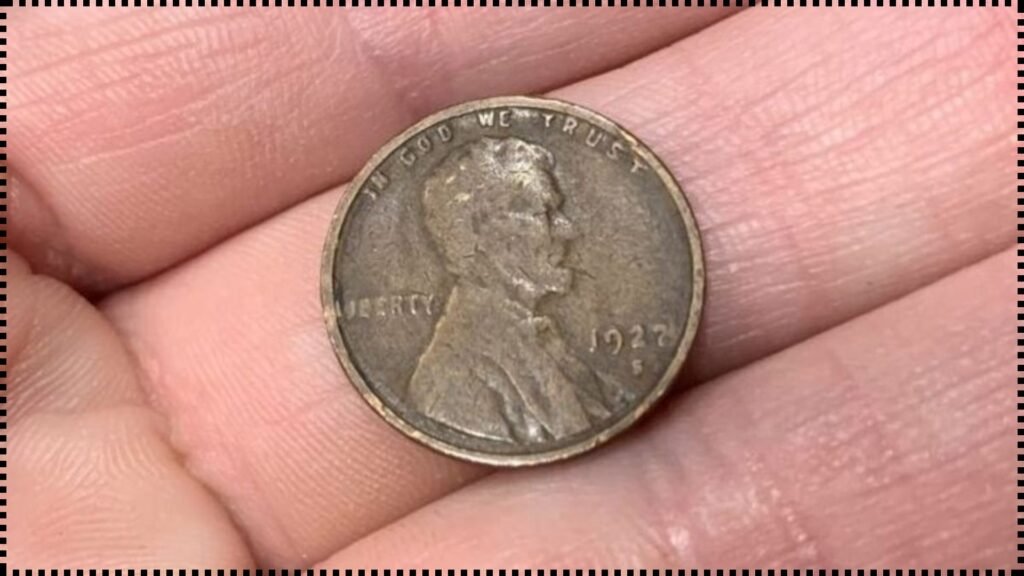Imagine rummaging through your loose change and stumbling upon a penny worth hundreds of thousands of dollars. It sounds like a fairy tale, but for collectors and numismatists, the Lincoln Wheat Penny holds exactly that kind of allure. Among the most captivating stories in American coin collecting is the tale of a rare Lincoln Wheat Penny, reportedly valued at $346,000, that might still be hiding in circulation.
This article dives into the history, value, and thrill of this iconic coin, offering insights for enthusiasts and casual readers alike. Let’s uncover the secrets of this numismatic gem and explore whether you could be holding a fortune in your pocket.
The Fascinating History of the Lincoln Wheat Penny
A Coin with a Presidential Legacy
Introduced in 1909, the Lincoln Wheat Penny was a groundbreaking addition to U.S. coinage. Designed by Victor D. Brenner, it was the first widely circulating U.S. coin to feature a real person—President Abraham Lincoln—in honor of his centennial birth year.
The obverse showcases Lincoln’s portrait, while the reverse displays two wheat stalks, symbolizing America’s agricultural strength. Minted from 1909 to 1958, these pennies became a staple in American pockets, with over 70 billion produced across three mints: Philadelphia (no mint mark), Denver (D), and San Francisco (S).
The Wartime Anomaly: 1943 Bronze Pennies
The penny’s value skyrocketed due to a rare minting error during World War II. In 1943, the U.S. Mint switched to zinc-coated steel planchets to conserve copper for the war effort. However, a few bronze planchets from 1942 were accidentally used, resulting in the ultra-rare 1943 Bronze Lincoln Wheat Penny. These error coins, struck in Philadelphia, Denver, and San Francisco, are among the most valuable coins in the world. One such penny recently sold for $346,000, sparking renewed interest in whether these treasures remain in circulation.
Why Is the 1943 Bronze Penny So Valuable?
Rarity and Historical Context
The 1943 Bronze Penny is a numismatic legend due to its extreme rarity. Only a handful—estimated at 15 to 20—are known to exist, making them a holy grail for collectors. The wartime context adds intrigue, as the error occurred during a critical period when copper was prioritized for military use. This historical significance, combined with the coin’s scarcity, drives its value to astronomical heights.
Condition and Grading
A coin’s condition is paramount in determining its worth. Professional grading services, such as PCGS or NGC, evaluate coins on the Sheldon Scale (1 to 70). An uncirculated 1943 Bronze Penny in Mint State (MS) condition can fetch $100,000 to $300,000, while circulated examples may still command $14,000 to $50,000. For instance, a 1943 Bronze Penny sold for $204,000 at a Heritage Auctions sale in 2019, highlighting the premium placed on pristine specimens.
Key Dates and Varieties
Beyond the 1943 Bronze, other Lincoln Wheat Pennies are highly sought after. Key dates include:
- 1909-S VDB: The first year with Brenner’s initials, low mintage of 484,000.
- 1914-D: Only 1.2 million minted, highly valuable in high grades.
- 1922 No D: A rare error where the Denver mint mark was omitted.
- 1955 Doubled Die: A striking error creating a doubled image, valued at $1,000+ in good condition.
These varieties add to the Wheat Penny’s allure, as collectors hunt for both errors and low-mintage coins.
Could a $346,000 Penny Still Be in Circulation?
The Thrill of the Hunt
The idea that a $346,000 Lincoln Wheat Penny could still be in circulation captivates collectors and casual coin enthusiasts alike. While most high-value coins have been pulled from circulation, stories like that of Don Lutes, who found a 1943 Bronze Penny in his change in 1947, fuel the dream. Lutes’ coin, discovered in a high school cafeteria, sold for $204,000 decades later, proving that such finds are possible, though extraordinarily rare.
How to Spot a Valuable Penny
If you’re eager to check your change, here are key characteristics to look for:
| Feature | Details |
|---|---|
| Date | Focus on 1943 for bronze pennies; also check 1909-S, 1914-D, 1922 No D. |
| Material | Use a magnet test: Bronze pennies are non-magnetic, unlike steel 1943 pennies. |
| Mint Mark | Look for D (Denver) or S (San Francisco) below the date; no mark indicates Philadelphia. |
| Condition | Check for minimal wear; uncirculated coins are worth more. |
| Errors | Look for doubled dies (e.g., 1955) or missing mint marks (e.g., 1922 No D). |
Pro Tip: Always consult a professional numismatist or grading service to authenticate a potential find, as counterfeits exist.
Tips for Coin Collectors and Enthusiasts
Getting Started with Coin Collecting
Coin collecting is an exciting hobby that blends history, art, and the thrill of discovery. Here’s how to begin:
- Educate Yourself: Study guides like the Red Book (A Guide Book of United States Coins) to learn about Wheat Pennies and other coins.
- Join a Community: Connect with local or online numismatic groups, such as the American Numismatic Association (ANA).
- Invest in Tools: Use a magnifying loupe and a magnet to examine coins closely.
- Store Safely: Keep coins in acid-free holders to preserve their condition.
Avoiding Scams and Counterfeits
The high value of coins like the 1943 Bronze Penny attracts counterfeiters. Beware of:
- Altered Coins: Some scammers plate steel 1943 pennies with copper or alter dates (e.g., changing a 1948 to 1943).
- Too-Good-to-Be-True Claims: Articles claiming pennies worth $3 billion or $124 million are often exaggerated and lack evidence. Stick to reputable sources like PCGS or NGC.
Conclusion: The Enduring Allure of the Lincoln Wheat Penny
The Lincoln Wheat Penny, especially the fabled 1943 Bronze Penny valued at $346,000, is more than just a coin—it’s a piece of American history that captures the imagination. While the odds of finding one in your pocket are slim, the possibility adds excitement to everyday transactions.
Whether you’re a seasoned collector or a curious novice, the hunt for these rare coins offers a unique blend of history, mystery, and potential reward. So, next time you get change, take a closer look—you might just uncover a treasure.
FAQs
How can I tell if I have a 1943 Bronze Penny?
Use a magnet test: A genuine 1943 Bronze Penny is non-magnetic, while steel pennies stick to magnets. Check the date and consult a professional for authentication.
Are all Lincoln Wheat Pennies valuable?
Not all are valuable. Key dates (e.g., 1943 Bronze, 1909-S VDB) and errors (e.g., 1955 Doubled Die) command high prices, while common dates in poor condition are worth only a few cents.
Where can I sell a valuable penny?
Reputable auction houses like Heritage Auctions or grading services like PCGS and NGC can help. Avoid selling to unverified buyers to ensure fair value.
What other Wheat Pennies should I look for?
Focus on 1909-S VDB, 1914-D, 1922 No D, and 1955 Doubled Die. These are rare and valuable, especially in good condition.
Can I clean my pennies to increase their value?
Never clean coins, as it can damage them and reduce their value. Professional grading services prefer coins in their original state.




Can you please send me some money 💰
Pingback: The Lincoln Wheat Penny Valued at $947K: Could It Be in Your Pocket